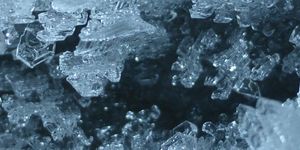Microplastics and Aquatic Plants, Problem or Solution?
Microplastics are becoming more and more common across the globe in all sorts of places. News about levels in animals, soils, drinking water, air, and everywhere else are becoming more commonplace. Research has shown deleterious effects on a number of animals, occasionally even death. But not much research has been directed to the effect of microplastics on plants and plants effects on microplastics, nor have many studies looked into microplastics under future climate predictions.
Microplastics are defined as synthetic materials of a particular size, between 5mm and .001mm. Often they are only considered at current concentrations and under current conditions, but in higher concentrations, and under changing climate conditions, their damage could be significantly increased. An example of a recent study looking at the effects on animals, some scientists looked at the reactions of Daphnia, a type of small crustacean, to microplastics at different temperature regimes. The scientists found that the Daphnia swim faster, have a decreased heart rate, and earlier maturation with microplastics and higher temperatures, possibly due to added stress. It has been documented that individual stressors can act synergistically, causing more stress together than would be expected individually.
Another study looking at the carnivorous aquatic plant Utricularia vulgaris, or Common bladderwort, found that microplastics had a significant impact on the microbial communities in their traps, as well as changed their growth rate, enzyme activity levels, and chlorophyll content. It accumulated in the plant’s digestive organs and was adsorbed. They used a relatively high concentration of microplastics to achieve significant results and suggested that high-quality nutrients could alleviate some of the microplastic-associated effects.
Using plants to pull microplastics from the water seems to have some merit. A study in China investigated the concentrations of microplastics in seagrass meadows and found that the seagrass acted as an efficient sink for microplastics, pulling the plastics from the water and settling the microplastics on the ocean floor. When tested in the lab, different concentrations of microplastics in water were decreased by up to 88% by eelgrass. The eelgrass forms a biofilm that can collect microplastics, and aggregates them into clumps large enough to settle into the sediment. Two bacteria were isolated from the eelgrass biofilms and were found to be the facilitating agents in this microplastic aggregation.
We still have much to learn about the interaction between plants and microplastics, and how our plants could be harmed or be useful in combating this worldwide issue.
Sources: Environmental Pollution 1, Environmental Pollution 2, Environmental Pollution 3, California State Polytechnic University









